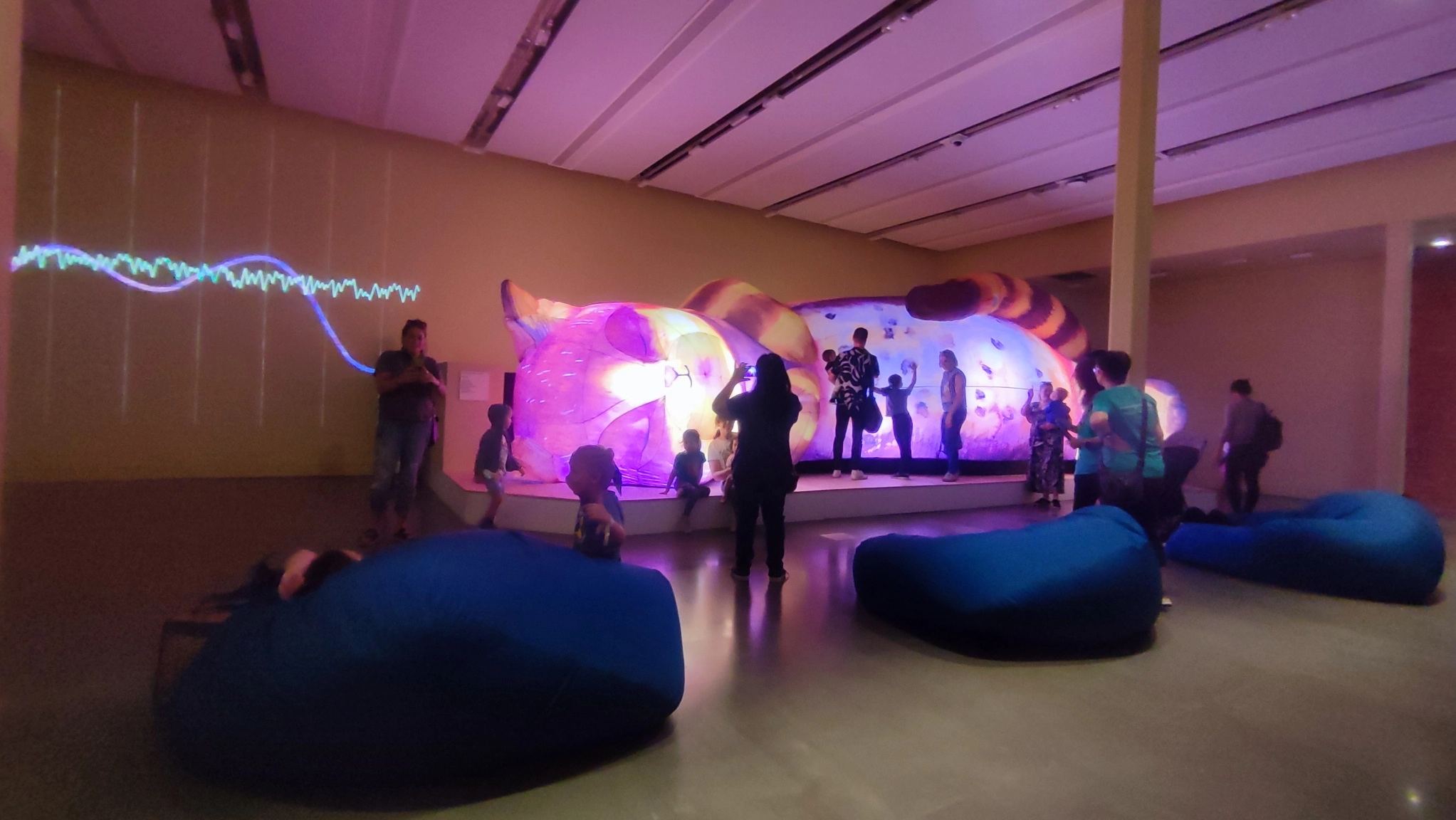The Manchester Museum have successfully created a place of wonder. A simple and charming experience.

The Cat That Slept for a Thousand Years | The Manchester Museum | Saturday 19 July – Sunday 14 September 2025
Reviewed by Caleb White
In spite of how busy life can become, I still manage to find the time to attend a few exhibitions here and there. Luckily, The Manchester Museum is right on my doorstep, as is their Summer Exhibition – ‘The Cat That Slept for a Thousand Years’. Half museum display, half fantasy world, this exhibition plays with the role of the museum and creates a charming, well attended, and pleasant experience. It stands as yet another example of why The Manchester Museum is deserving of its title as European Museum of the Year.
The exhibition, running from July 19 until Sept 14, is ticketed, but tickets are free. This is presumably to both record visitor numbers, and to prevent over-crowding. The space is unidirectional, and, even at 10am, there are many families with small children entering, exploring, and exiting. Setting a control on visitor numbers is a necessity. It runs during the Summer Holidays and is a free experience designed for young children.
Beyond the entrance door, but before the exhibition proper, is a small nook allowing visitors to borrow and return earmuffs and other items of sensory control. It is a nice, and thoughtful, touch.
We begin with the narrative. A team of Antarctic researchers have discovered a wondrous creature and have brought it to the museum to care for and study it. This is told through artworks on the wall, text around the room, and a cbeebies style animation. The looping video is around three minutes long and kindly provides a timer in the lower right corner. The benches in front of the screen are almost full with people engaging with the video. Much like the previous exhibition held in this space (‘Wild’), the first room acts as an airlock. It allows you to transition from the outside world to the fantasy world within.
In the next room we see a mix of images related to the fiction, and objects from the museum that support it. For example, bones from big cats are shown near an x-ray of the giant cat. The exhibition is sparse with information and refined in the objects it presents. By reducing the amount of objects shown, each one becomes more exciting, and more likely to draw in the younger audience.
Rounding the corner we see the main attraction. A gigantic installation, a huge inflated and articulated sculpture replete with purring sounds and a chest that rises and falls as the creature sleeps and dreams. The ginormous cat has a beautiful sunset, watercolour-esque palette, through which light is shone, illuminating the entire room in sleepy yellows and purples. We are invited to interact with it, as we would a cat. Petting, stroking, scritching. And many are. The space is full of parents and young children, many of whom are stood on the platform upon which the installation sits, their faces pressed up against its surface, listening to it purr. It does feel very alive and very cosy. Very Ghibli-esque and highly Cat Bus inspired.
Around the room are beanbags. They are unfixed, and the visitor assistants are having a bit of a time trying to stop children sliding on them across the floor. A few bench-like seats are provided as well. The entire layout is constructed from what I believe to be recycled materials.
The giant cat is made in collaboration with Air Giants, a robotics studio focussed on soft, pneumatic creations, like our friend here. A cursory glance at their other works shows a portfolio of gentle, welcoming, and magical creations.
Beyond the Giant Cat, we find a few cabinets of cat-related artefacts from across the museum’s collection. They are presented with little info – beyond provenance – but encourage us to think about how we interact with cats. A particular favourite of mine is the double chambered Chima-inka 15th Century bottle.
Then another airlock taking us out of the fantasy and back to the rest of the museum. This time, there are three sections. One, a collaborative mural space, with provided crayons and whitewashed thought bubbles around the walls. Another is simply a gallery of cat photos. The last is the classic and conventional free-form feedback wall, where visitors are encouraged to respond to the exhibition visually and pin up their works on a board.
It is clear that this exhibition is targeted at a younger demographic, and in that it succeeds. Judging by the amount of families attending, and by how welcoming, tactile and not-overwhelming it is, I would say Manchester Museum should be very happy with this. While the theme of Cats is a little narrow for many deeper conversations, the gallery does foreground the idea of care and compassion through how the fictional researchers are working with our new feline friend.
Manchester Museum have successfully created a place of wonder, and a pleasing dreamlike fantasy, bolstered by a handful of museum objects. The exhibition’s footprint is small, but it doesn’t try to do too much. A simple and charming experience.
Reviewed by Caleb White
